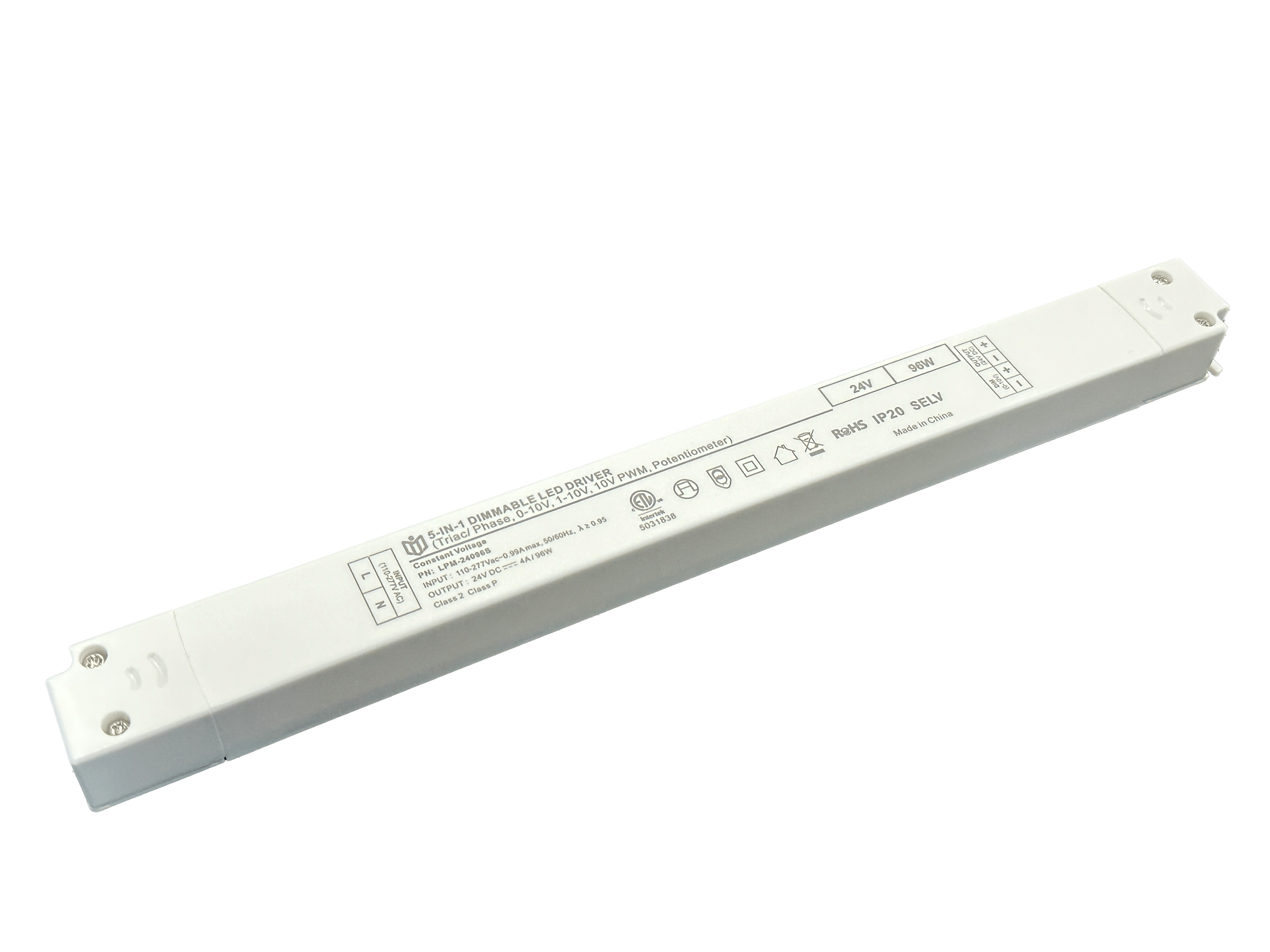Why is the TRIAC dimmable power supply considered the central hub of intelligent dimming?
The Fundamental Architecture of Phase Control
At its core, a TRIAC (Triode for Alternating Current) dimmable power supply leverages bidirectional semiconductor switching to chop AC waveforms during each half-cycle. Unlike resistive or PWM methods used in DC systems, this phase-cut technique precisely adjusts voltage delivery by triggering conduction at specific angles within the sine wave. For example, delaying gate activation until 90° past zero-crossing reduces RMS power by 50%—creating seamless brightness transitions without audible noise or flicker. This inherent ability to modulate alternating current makes it fundamentally compatible with virtually all filament lamps, halogen fixtures, and even dimmable LED drivers.
Universal Interoperability Across Device Ecosystems
What truly elevates TRIAC units to central hub status is their unmatched protocol flexibility. They natively interpret analog voltage signals from traditional slide/rotary dimmers while accepting digital commands via DALI, DMX512, or KNX bus systems through add-on modules. A single multitap output channel can simultaneously manage trailing-edge MOSFET arrays for LED strips and leading-edge incandescent banks—something competing topologies like 0-10V cannot achieve without complex hybrid architectures. Major manufacturers including Lutron and ABB design their entire product stacks around TRIAC compatibility layers.

Enabling Scalability Through Cascaded Intelligence
Modern implementations transform basic dimming into networked intelligence. When paired with microcontrollers, TRIAC supplies execute dynamic scene presets by varying phase angles across zones. Hotel ballrooms use them to sync hundreds of fixtures via DMX addresses, while industrial settings tie dimming levels to occupancy sensors through BMS integration. Crucially, they maintain stable operation across wide load ranges (typically 10W–1kW per channel) without requiring recalibration—a critical factor when expanding from boutique installations to stadium-scale deployments.
Efficiency Gains That Justify Investment Costs
While early thyristor designs suffered from heat dissipation issues, contemporary snubberless TRIACs achieve >98% efficiency at partial loads. Their near-zero standby consumption complies with Energy Star 8.0 regulations, particularly valuable in commercial retrofits where thousands of sockets remain populated daily. Field tests show buildings using adaptive TRIAC controls reduce peak demand charges by up to 22% compared to non-dimming circuits, accelerating ROI through utility rebate programs alone.
Robustness Against Electrical Anomalies
The self-latching mechanism inherent to TRIAC operation provides exceptional fault tolerance. Sudden voltage spikes trigger natural commutation failure rather than damaging components, while built-in overcurrent protection safeguards against short circuits. This resilience explains why museum curators trust them for priceless artwork illumination—where reliability trumps marginal efficiency differences. Even in unstable grid environments common across developing regions, hardened models maintain safe operation down to 85VAC input.
Bridging Analog Heritage with Digital Future
Perhaps most significantly, TRIAC systems preserve backward compatibility while enabling IoT advancement. Retrofits can add Zigbee modules to existing wall plates without replacing wiring, allowing gradual migration toward fully automated ecosystems. As smart home platforms standardize Matter protocol next year, expect TRIAC controllers to serve as translation layers between legacy dimmers and virtual assistants—extending the lifespan of installed bases by decades while unlocking predictive maintenance capabilities through real-time telemetry.
In every metric—technical versatility, system scalability, operational efficiency, and evolutionary adaptability—the TRIAC dimmable power supply demonstrates why it remains the indispensable neural center connecting human intent to illuminated environments. Its role transcends mere electricity regulation; it orchestrates light as both utility and experience.
 In heritage architecture prote
In heritage architecture prote
 When small-batch customization
When small-batch customization
 Have the electromagnetic emiss
Have the electromagnetic emiss
 When Triac dimmable power supp
When Triac dimmable power supp
